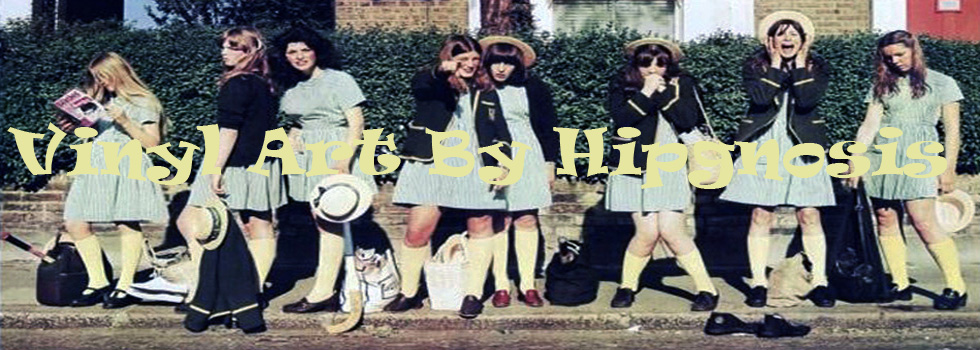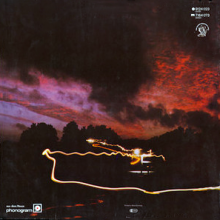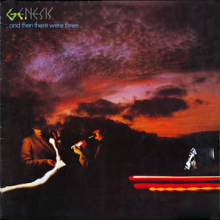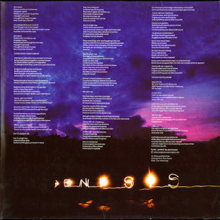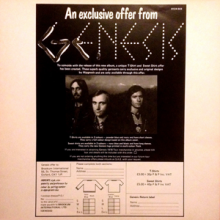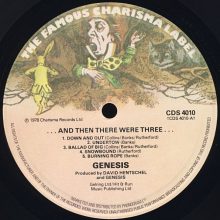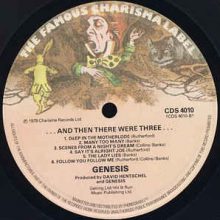Biography
Genesis were an English rock band formed at Charterhouse School, Godalming, Surrey in 1967. The most commercially successful and longest-lasting line-up consisted of keyboardist Tony Banks, bassist/guitarist Mike Rutherford and drummer/singer Phil Collins. Significant former members were original lead singer Peter Gabriel and guitarist Steve Hackett. The band underwent many changes in musical style over its career, from folk music to progressive rock in the 1970s, before moving towards pop at the end of the decade. They have sold 21.5 million RIAA-certified albums in the United States and their worldwide sales are estimated to be between 100 million and 150 million. Formed by five Charterhouse pupils including Banks, Rutherford, Gabriel, and Anthony Phillips, Genesis was named by former pupil Jonathan King who arranged them to record several unsuccessful singles and an album. After splitting with King, the group began touring professionally, signing with Charisma Records. Following the departure of Phillips, Genesis recruited Collins and Hackett and recorded several progressive rock style albums, with live shows centred around Gabriel’s theatrical costumes and performances. The group were initially commercially successful in mainland Europe, before entering the UK charts with Foxtrot (1972). They followed this with Selling England by the Pound (1973) and The Lamb Lies Down on Broadway (1974) before Gabriel decided to leave the group. https://en.wikipedia.org/wiki/Genesis_(band)
Album & Cover
…And Then There Were Three…, the first Genesis album recorded as a trio, at Relight Studios with Hentschel as producer. It was then mixed at Trident Studios in London. The album is a collection of shorter songs in order to put across more musical ideas. Most of its eleven songs were written individually with Banks contributing four, Rutherford three, Collins and Banks one, and the remaining three written collectively. Their new material signalled a change in the band’s sound with songs becoming more pop-oriented and commercially accessible, including the group-written track “Follow You Follow Me”. Collins recalled it was the only song on the album written from scratch during rehearsals. Rutherford felt comfortable taking on lead guitar duties in addition to his usual rhythm and bass roles, although the band had considered auditioning replacement guitarists or using a session guitarist on the album. Collins later saw the album as “a very vocal, solid album” that lacked more rhythmic tracks like “Los Endos” or songs from Wind & Wuthering, as coming up with ideas on the drums while living in his flat in Ealing with his family was difficult. https://en.wikipedia.org/wiki/…And_Then_There_Were_Three…
This cover design according to Aubrey Powell was taken from the lighting inventor and artist Gjon Mili’s photographs of Picasso in 1949. It show Picasso painting with a light source while he is photographed. This was tried by the band but it was harder than it looks so the reproduced in the studio and superimposed on the photograph of the band.
Cover Location: On a farm somewhere in Surrey
Who Did What: Photography: A. Powell. Sleeve Design: Hipgnosis. Sleeve [Sleeve Adaptation, For The Redroom]: Chris Peyton.
Label: Atlantic SD 19173(US), Charisma CDS 4010(UK)
Source: Vinyl. Album. Cover. Art, The Complete Hipgnosis Catalogue: Aubrey Powell
Hipgnosis | Portraits – Aubrey Powell
| Side One Down And Out Undertow Ballad Of Big Snowbound Burning Rope |
Side Two Deep In The Motherlode Many Too Many Scenes From A Night’s Dream Say It’s Alright Joe The Lady Lies Follow You Follow Me |
Credits
Drums, Voice – Philip Collins
Guitar, Bass – Mike Rutherford
Keyboards – Tony Banks
Mixed By [Assisted By] – Steve Short
Producer – David Hentschel, Genesis
Producer [Assisted By] – Pierre Geofroy Chateau
Technician [Equipment] – Andy Mackrill, Dale Newman, Geoff Banks
Written-By – Rutherford (tracks: A1, A3, A4, B1, B4, B6), Collins (tracks: A1, A3, B3, B6), Banks (tracks: A1 to A3, A5, B2, B3, B5, B6)
